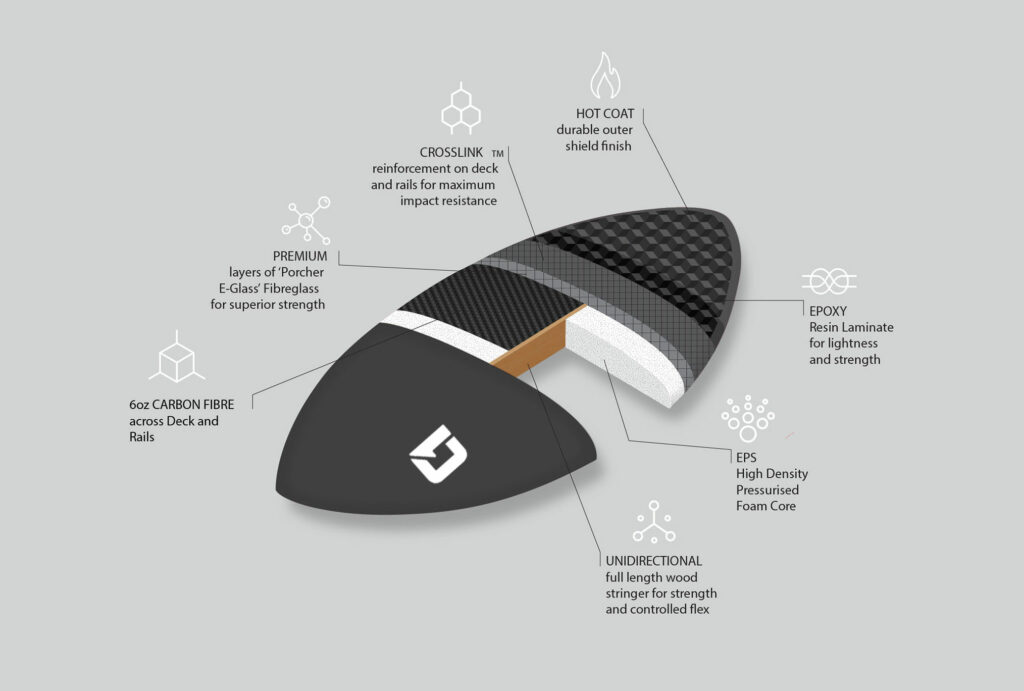Skimming across the water’s surface on a slender board captures a one-of-a-kind rush that explains the increasing popularity of skimboarding as a watersport. This up-and-coming watersport has exploded in popularity in recent years as more people discover the joy of riding the surf on a skimboard. Unlike surfing which requires deep, powerful waves, skimboarding can be done on almost any beach with a gentle slope and small waves. All you need is a skimboard, a bit of practice, and some basic techniques to get started.
In this beginner’s guide, we’ll cover everything you need to know about how to skimboard. We’ll go over the proper stance and positioning on the board, the timing required to catch and ride waves, as well as key maneuvers like turning and stopping. We’ll also discuss what to look for in your first skimboard and provide tips on finding the ideal beaches and conditions for skimboarding. With a bit of patience and persistence, you’ll be carving along the shallows and catching air off waves in no time. So grab your board and let’s hit the waves – the thrill of skimming awaits!
Essential Steps for Beginners
Understanding the Skimboard: Types and Sizes
Skimboards vary in shape and dimensions, but first focus on a board sized to your height and weight. Look for one about chest-high when standing it upright. Wider, flatter shapes provide stability for beginners by increasing surface area. Consider a foam deck construction for extra buoyancy initially.
Choosing the Right Beach for Skimboarding
Seek out beaches with small, calm waves, smooth wet sand, and a gently sloped seabed. Steep drop-offs are difficult for catching waves. Bays and harbors often create suitable skim conditions with rideable shallow surf. Check tide schedules to ensure adequate water level.
Safety Precautions and Gear
Protecting yourself is a top priority. Be sure to wear a helmet when starting out as falling frequently occurs. Neoprene traction pads on feet grip the board. Avoid loose shorts that can snag or fill with water/sand. Always apply sunscreen and swim near lifeguards.
how to use a skimboard: Step-by-Step Guide
Let’s break down the basic skimboarding techniques to pick up initially:
The One-Step Drop
Standing on shore holding the board, begin jogging towards the water’s edge. Right before reaching the wash, leap onto the board while simultaneously tossing it onto the incoming shallow wave.
Tip: Time this hop plus board toss perfectly to maintain momentum.
This coordinated move takes repetition to master. Envision it in slow motion: sprinting down the beach, hurling the board as you long jump onto it, bending your knees slightly to balance your landing.
Achieving Balance
Proper stance is key once mounted. Place the front foot near the board’s center point, angled slightly forward.
Tip: Make small knee bends and weight shifts to stay centered.
Visualize gliding forward, knees bent, steadily adapting body movements to hold equilibrium.
Riding Waves and Sand Skimming
Let’s visualize riding waves and sand skimming – two thrilling advanced skimboarding techniques.
How to Skimboard Waves
See the wave starting to build? Angle your board perpendicular to shore. Feel the wave catch and lift the nose of your board upward.
Tip: Lean back and bend those knees to stay centered as you ride the wave face!
Carve some sweet turns across the wave by shifting your weight from rail to rail. Don’t brake as it starts breaking – charge straight through that barrel!
Sand Skimming on a Flat Beach
No rideable waves? No problem! Envision sprinting at full speed down a hard-packed beach. Toss your board out as far as possible and hop on.
Tip: Pump your legs to pick up momentum for long, smooth skims!
Picture yourself carving wide arcs back and forth across the wet sand. Feel the board glide as you shift your weight to steer.
Let’s go through the sequence together. See yourself sprinting, launching the board, catching a wave, carving, then switching to sand skimming on a flat beach. Nice visualizing – you’re on your way to mastering these advanced skills!
Common Skimboarding Mistakes and Solutions
Avoid these common blunders as a beginner:
Skimboarding Spills and Falls
Falling is part of learning! Here are some common mistakes to avoid:
- Tossing the board too early or late when dropping in, causing you to lose momentum or miss the board. Time your toss and hop carefully.
- Standing up too quickly and losing balance. Stay low by bending knees.
- Looking down at the board which throws off your center of gravity. Eyes up!
- Catching the nose edge from leaning too far forward. Keep centered over the board.
- Hitting wet sand too slowly or timidly. Go for it full speed!
Anticipating Transitions and Improving Skills
As you progress, pay close attention to:
- Smoothing out the transition from sprinting to dropping onto the board. One fluid motion is key.
- Reading the waves and anticipating when to catch them. Quick reactions will come with time.
- Making adjustments as you shift from riding waves back to the flats. Subtle weight shifts control speed.
- Pushing your limits gradually. Add new tricks once basics are solid.
Be patient, have fun, and keep at it! Gaining skills takes perseverance through falls, but that makes nailing new techniques even more rewarding.
Conclusion
Skimboarding unlocked a singular adventure, but controlling the board takes commitment through a learning curve. Wear safety gear, progress slowly, and learn fundamentals first before advancing. Sticking with proper practice conditions builds abilities and trust in yourself on the waves. Though occasional falls occur, resisting discouragement and continuing to refine balance and timing makes for an unforgettably fun ride along the shallows!


